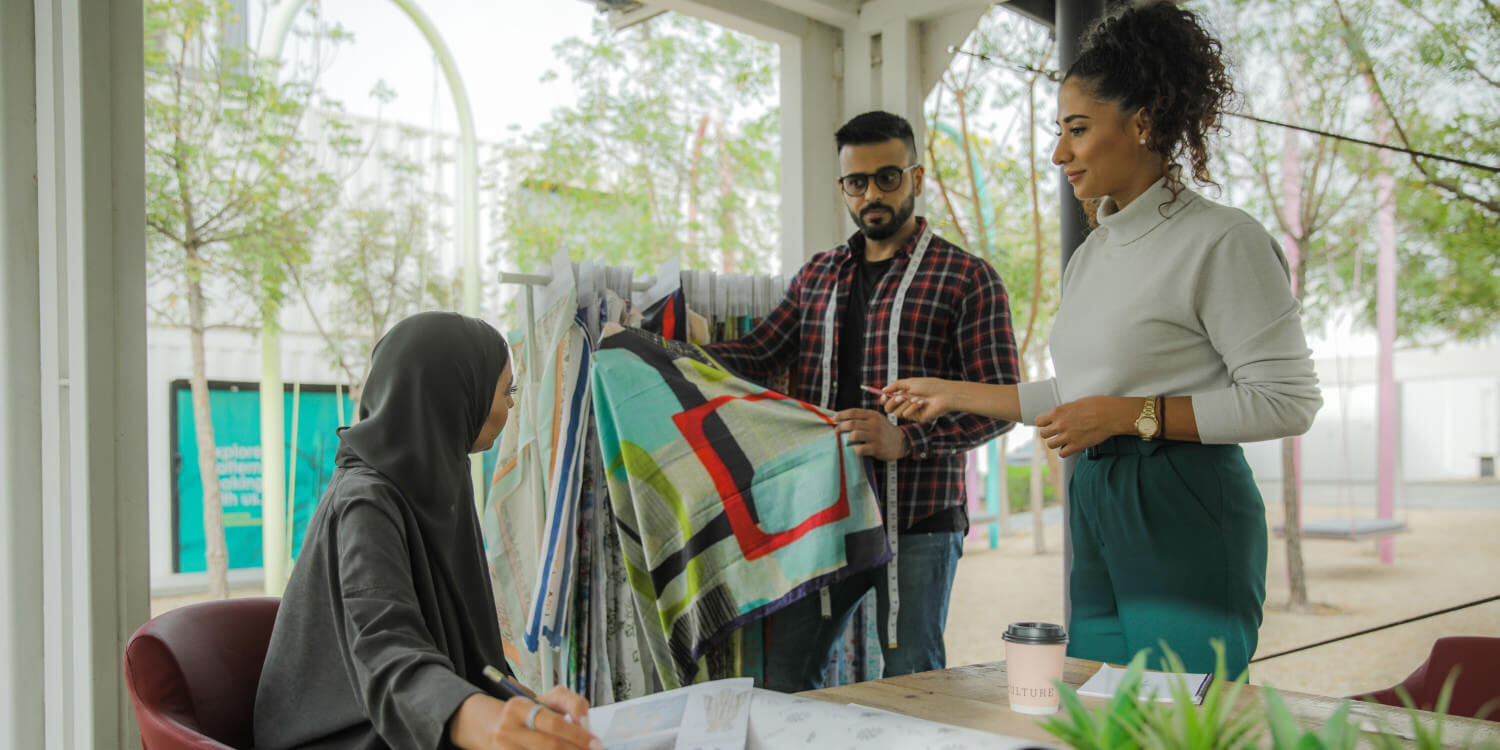Dubai’s fashion startups eye global industry
Pent-up demand is driving a fashion industry rebound and new designers hope to capitalise on the trend with small scale collections that meet consumer needs and avoid waste.
In 2020, the fashion industry saw a wipe-out of its profits by 93%. A year later, and with the pandemic still going, some of the world’s largest fashion companies are showing strong signs of recovery.
H&M Group’s second-quarter gross profit increased by 89% compared with last year, while Gap Inc. reported a gross margin of 42.1% for the quarter, representing the highest third quarter rate in over ten years.
Pent-up demand, the acceleration of digitization and easier access to capital are fueling the recovery and providing start-up opportunities for young designers. In the United Arab Emirates, the in5 Fashion Lab helps aspiring entrepreneurs weave together a fashion business by providing essential resources.
Located at the Dubai Design District, the lab is the latest facility added to the in5 design innovation centre, whose start-ups have raised $126 million (AED 465 million) in funding since 2013.
Design consultancy Aara Inc has been running the fashion lab since the beginning of this year. “People who are looking for grass roots level help and designers who don't have a very large budget to set up their collections come to us,” Aara Inc’s CEO Manoshi Kamdar told Salaam Gateway.
She said many designers lack technical education or formal design experience: “They have ideas, and that’s where we can help them. We’re dying to show them the way and see some of those incubated businesses launch and maybe even make it to Fashion Week.”
The organisation’s services include apparel and textile designing, sampling, grading, production and business development. The initial 30-minute business consultation is free while additional services are subsidised for in5-members.
“Despite the pandemic, people have neither lost their appetite to buy nor to create,” Kamdar said. “They just don't do it at the same scale as they used to before.”
Kamdar explained that young designers aim for minimal collections of less than 50 pieces, which the lab’s small-scale manufacturing with low minimum order quantities of up to 1,000 units can accommodate.
Young designers avoiding excess manufacturing saves capital and resources and highlights two of the fashion industry’s most prominent issues — overproduction and waste.
“40% of garments are sold at markdown,” said Anita Balchandani, head of McKinsey's EMEA Apparel, Fashion & Luxury Group, citing overproduction or misjudging consumer demand as the reason.
Balchandani also noted that less than 1% of used products are recycled back into the industry’s value chain. Technical innovations such as predictive virtual sizing and personalised clothing are a creative way to tackle these problems, she said.
With fashion being a significant part of the creative economy, the in5 Fashion Lab initiative aligns with Dubai ruler Sheikh Mohammed bin Rashid Al Maktoum’s announced plans to transform the city into a global hub for the creative industries. The new strategy aims to increase the sector’s GDP contribution to 5% of Dubai’s economy by 2025.
In addition, it seeks to boost the number of creative companies based in Dubai from 8,300 to 15,000 within the next five years and more than double the number of creators based in the city, from 70,000 to 140,000.
© SalaamGateway.com 2021 All Rights Reserved
